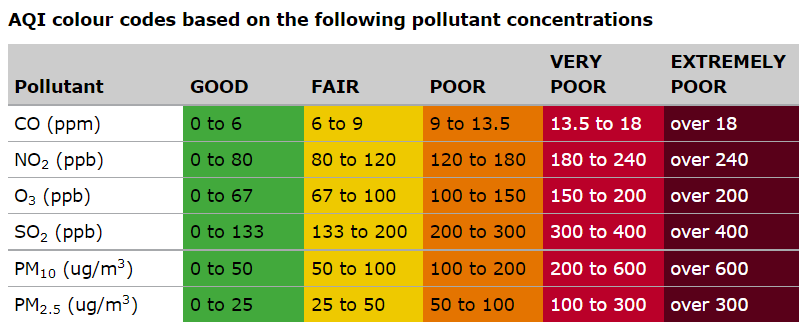PM2.5 categories and recommendations
The Department of Water and Environmental Regulation publishes hourly updates on PM2.5 levels in our air, but what does this mean? Here, we explain.
What is PM2.5?
PM2.5 is the most common pollutant in smoke, which is why it is used to measure the level of smoke. “PM” stands for Particulate Matter and the “2.5” refers to the size of the particles being measured (so PM2.5 are particles that are 2.5 µm (millionth of a metre) or smaller in diameter).
PM2.5 can affect human health and as levels increase more people can be affected and symptoms can become more severe. For most people, smoke will irritate eyes, nose and throat but for people with existing heart and lung diseases, smoke can trigger life-threatening symptoms that may lead to hospitalisation and have the potential to be fatal.
While the health effects caused by smoke from fires is generally short-term for most people, it is important that people with asthma and other respiratory conditions take the appropriate steps to protect themselves from smoke exposure, particularly if smoke is known (or suspected) to be a trigger for their condition.
Sometimes smoke is not easy to see so to help you make decisions the WA Department of Water and Environmental Regulation (DWER) provides hourly updates for PM2.5 measured at their air quality monitoring stations situated at a number of locations in Western Australia.
What should you do?
Knowing the latest update is one thing, but do you know what action to take in different situations?
First and foremost, follow directions from emergency services and advice from your doctor at all times.
When you view the Air Quality Index you will see if it is colour-coded based on the pollutant level and the category it falls into.
Here is a snapshot of how the categories are determined.

(Source: Department of Water and Environmental Regulation, March 2022)
Access the latest updates
To see live updates on air quality along with recommended steps relating to PM2.5 levels, visit DWER’s Air Quality Index.
Or join the Asthma Alert Facebook Group where updates are shared such as:
- when air quality moves above “Good”
- Smoke Alerts
- Bushfire Advice
- other Western Australian community updates
